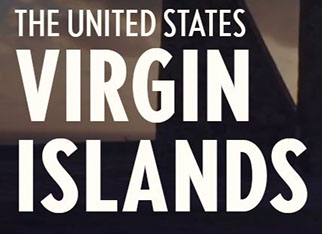Everything St. John
St. John is one of four islands that make up the US Virgin Islands. The other three islands are St. Thomas, St. Croix and just off the southern shores of St. Thomas lies Water Island. St. John has the reputation of being the most beautiful, friendly and tranquil island all of the Caribbean. St. John is less than 20 square miles in area, approximately 8 miles by 3 miles and it has 32 sandy beaches and 22 preserved National Park Hiking Trails. Approximately 2/3 of the island is part of the St. John Virgin Islands National Park.
St. John’s coordinates: 18.2N 64.5 W, 1075 miles east southeast of Miami, 50 miles east of Puerto Rico, 3 miles east of St. Thomas. To the north is the Atlantic Ocean and to the south is Caribbean Sea. The highest elevation is 1,277 feet at Bordeaux Mountain. St. John’s population hovers around 2,000 residents.
Getting to St. John is simple, most guests fly into St. Thomas Airport (STT) and ferry over to St. John most commonly via the Red Hook people ferry. Ferries run every hour on the hour from 6:00 a.m. to 11:00 p.m. There are alternative ferry options through Charlotte Amalie or Crown Point.
St. John is surrounded by many islands and cays and some that you’ll want to visit. Bring your passport in the event you decide to visit the British Virgin Islands which lie only 3 miles to the north. St. Thomas is our largest urban neighbor and you won’t need a passport for a visit. There is an abundance of shopping for everyone – tourists and locals alike. This is also home to the closest year round large screen cinemas, a bowling alley, and many larger tourist attractions including Coral World. Ferries can take you to Red Hook on the east end of the island, or to Charlotte Amalie which is also known as ‘downtown’.
The official language is English, although in addition to Standard English you will encounter various West Indian Dialects spoken by Virgin Island natives and residents from other English speaking Caribbean countries. Other languages spoken on the island are Spanish, spoken by natives of Puerto Rico and Santo Domingo, Patois, spoken as a second language by residents of St. Lucia and Dominica, and Creole, spoken by residents of Haiti.
National Park
In 1950, Mr. Laurence Rockefeller purchased extensive holdings on St. John including holdings of the Danish West Indies Company, developed Caneel Bay Resort and donated much of the remaining acreage to the U.S. Government as public parkland and Congress formed the V.I. National Park. Unfortunately the Caneel Bay Resort was destroyed by the 2017 hurricane named Irma.
The Virgin Islands National Park holdings include 7890 acres of land, 5650 submerged acres off shore, plus approximately 13,000 acres submerged off shore as “Virgin Islands Coral Reef National Monument.”
In addition to beaches regularly declared to be among the best in the world, the Park offers hiking trails, archaeological sites, educational talks and tours, a Visitors’ Center, and a campground.
Weather
Weather on St. John ranges from perfect to excellent, with near-ideal temperatures and gentle trade wind breezes. Rainfall averages around 43 inches per year. Winter temperatures range from about 77 to 84 degrees and summer temperatures range from about 82 to 90 degrees. Cooling trade winds blow east to northeast in the winter switching south to southeasterly in the summer.
Currency/mail
The local currency is the U.S. Dollar. Most places accept major credit cards. You may want to bring cash as well or an ATM card as there are a few ATM cards on island. Express Mail via the US Postal Service is the quickest way to receive/send important packages. To mail a package to St. John in advance of your arrival, call us directly and we will be more than happy to give you instructions on mailing to the Virgin Islands.
Greetings
A wonderful custom here in the islands is greeting everyone with a “good morning”, “good afternoon” or “good evening.” Caribbean manners are important! In our West Indian culture, we show respect for others by saying, “Good Morning,” “Good Afternoon,” and “Good Evening” before anything else! West Indians take pride in this tradition and are appreciative when visitors make the effort to understand the ways of the islands. This simple courtesy can be your ticket to learning and navigating St. John with ease and enjoyment.
Grocery Stores
There are four plus “grocery stores” in or near Cruz Bay and one small store in Coral Bay. Grocery prices are approximately 25% higher than in the states. Some locals make the trek to St. Thomas to do large grocery orders and other shopping, as prices on St. Thomas are closer to the mainland.
Insects
We have constant trade winds that normally keep the mosquitoes away, but if they come around, use your favorite insect repellent and keep the screens closed. Be nice to the little island lizards…they eat the mosquitoes! At night you will hear the tree frogs and crickets. Especially after an evening rain shower– relax and enjoy the chorus! We greatly appreciate using sunscreens that are safe for our reef system.
Internet
Internet is available at most Villas and at local establishments
Local Time
St John is the same time as the East Coast of the United States during the summer months (April – October). When Daylight Savings Time goes into effect in the States (October – April ), we do not change our clocks. Therefore, we are an hour ahead of the East Coast and 2 hours ahead of Central Time etc.




